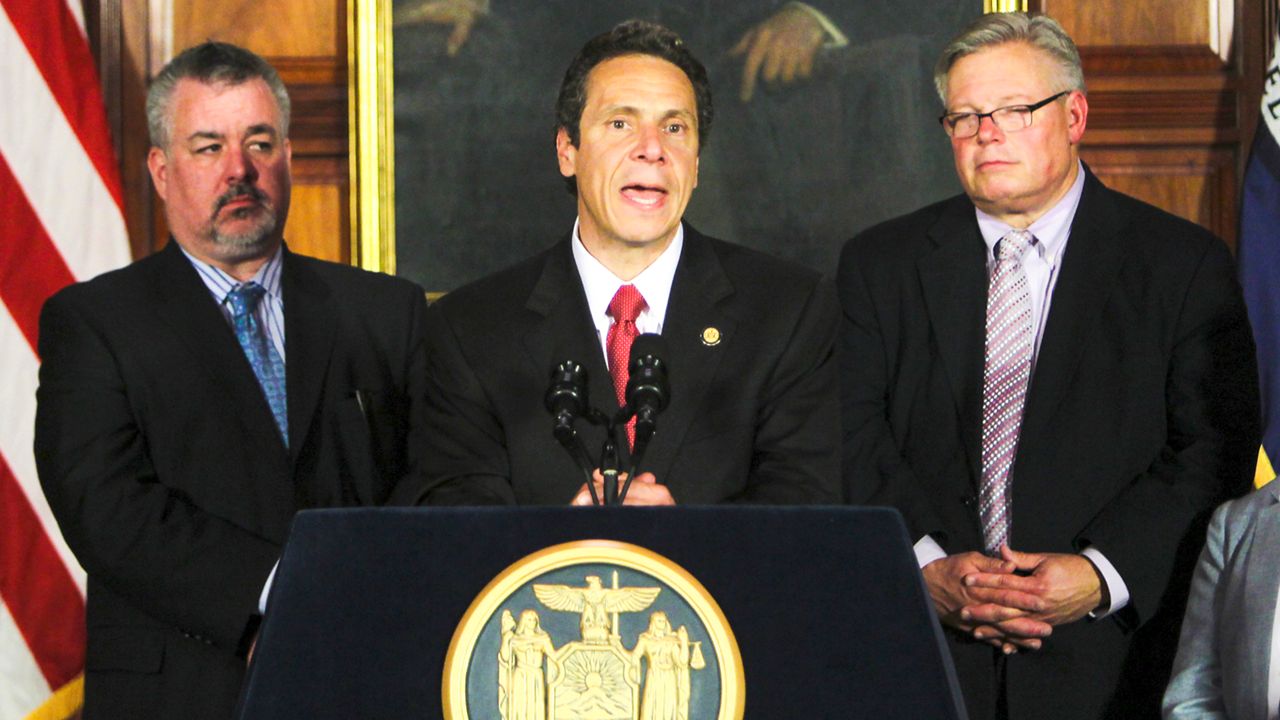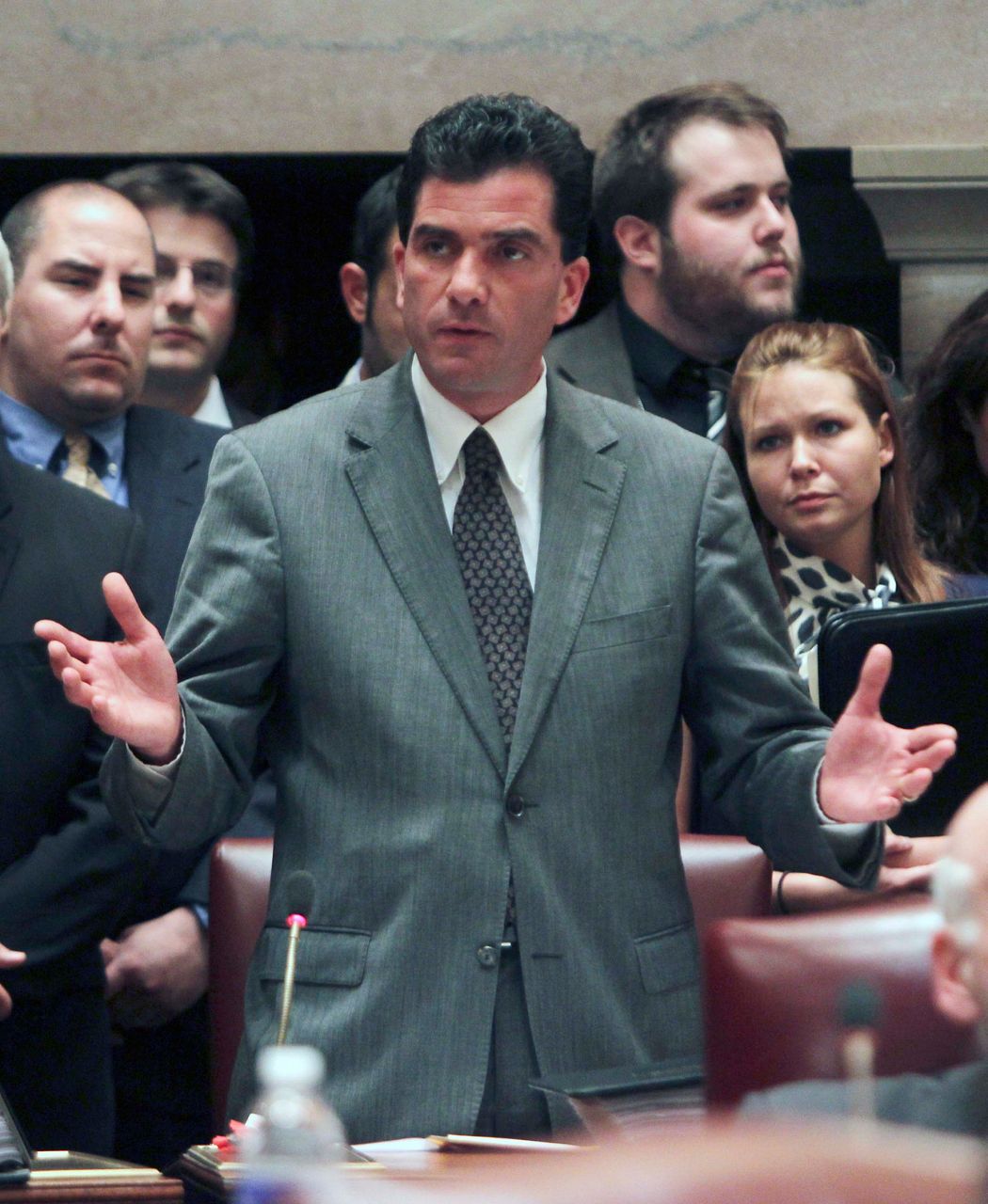On this date, ten years ago, just before 10:30 p.m., four members of the New York state Senate Republican conference in Albany joined all but one of the Democrats in the chamber to pass the Marriage Equality Act. It was an emotional moment, as the law allowed same-sex couples to marry in the state.
Gov. Andrew Cuomo would sign the measure a few minutes later to enthusiastic applause. At the time, it made New York the largest state to legalize marriage for gay and lesbian couples.
The two primary bill sponsors of the Marriage Equality Act, state Assemblyman Danny O’Donnell and former State Sen. Tom Duane, spoke to Capital Tonight about the bill’s difficult road to passage.

It took the efforts of three governors to get the bill across the finish line. The first attempt was in 2007 under Gov. Eliot Spitzer. The bill passed in the Assembly to much fanfare, only to die in the Senate. Even so, bill sponsor Assemblyman Danny O’Donnell said it was a tremendous achievement.
“You have to get used to the idea that your bills will die in the Senate if you want to serve here,” he told Capital Tonight. “So that wasn’t a new thing for me.”
At first, Gov. Spitzer’s program bill garnered the support of only 24 members of the Assembly, which was led by a majority of Democrats.
“[Assemblywoman] Deborah Glick and I were on a mission of going person to person to try to make the case," O'Donnell said. "I said I would invite them to my wedding if they supported the Act. I kept that promise."
O’Donnell also implemented an education strategy to gain more votes: Every week he would send members a newsletter with a different argument for why marriage equality should pass.
“I pivoted from a moral argument to a legal argument to a religious argument. Every week, they got something from me and I ended every one of the letters the same. ‘John [O’Donnell’s partner] and I thank you for taking the time to consider this.'"
Two months later, the bill had 85 "yes" votes, “which, as you know, is miraculous,” O’Donnell said.
The fight resumed during an extraordinary session in 2009 under Gov. David Paterson.
“It was put on the calendar, not at my request,” former state Sen. Tom Duane recalled. “My mother died at 3 in the morning and then I got a sympathy call from the governor later that morning. Then he called back a few hours later and said, ‘by the way, I’m putting marriage on the agenda for next week’. So, it was a difficult time for me because at that point, I knew the Republican leader was saying it was going to be a vote of conscience. But I knew it was going to be a vote of conference, and we didn’t have all the Democrats onboard.”
It would be another two years before Gov. Andrew Cuomo made marriage equality a centerpiece of his first year in office.
“The good thing was that Gov. Cuomo did convene all of the organizations and activists who were working to pass the bill. That was very helpful so we were all always on the same page with the same message,” Duane recalled.
Three Democratic state senators who had voted down the bill in the past, Shirley Huntley, Carl Kruger and Joseph Addabbo, had informed Duane that they were switching their votes to "yes." Sen. Rev. Ruben Diaz Sr. would be the lone "no" vote among Democrats in 2011.
“But there were four Republicans who publicly were going to vote 'yes' on the bill. So, I knew it was going to pass,” Duane said. “It’s all going to be in the book that I’m never going to write.”
The four Republicans were Sens. Roy McDonald, James Alesi, Steve Saland and Mark Grisanti.
A month before the bill came to the floor in the state Senate, the New York Conservative Party announced that any Republican who voted “yes” on marriage equality would lose the Conservative Party line.
Court of Claims Acting Supreme Court Judge Mark Grisanti, then a state senator from Buffalo, told Capital Tonight that, ten years later, he has no regrets voting for the bill.

“It was definitely the right thing to do,” Grisanti said. “I mean, don’t get me wrong. I was struggling with it, as I said in my speech on the Senate floor.”
Grisanti recalled that, at the time, the issue of gay marriage “was coming like a freight train” toward the Legislature. But while he was running for office, it never came up.
“I had to do the research on it, and the research clearly showed that, if I recall correctly, it was over 1,300 rights that were being denied same-sex couples. Who am I to say they shouldn’t have the same right that I share with my wife?”
Grisanti recalled several conversations with Gov. Andrew Cuomo, but said he never felt that Cuomo twisted his arm.
“He didn’t know where I was at at the time of vote,” said Grisanti. “But it was definitely the right vote. I wasn’t about to put whether or not I was going to lose a party line in front what I felt, after doing the research, was the right thing to do.”


